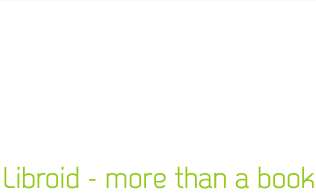The Idea
From Theory to Practice:
While around the world people are still puzzling over how the book of the future will look and what it will be called, in a virtual workshop somewhere between Berlin and Hamburg, history has already been written.
We have called it the Libroid.
Libroids can do everything a book can do - and more. They can be read like books or their electronic equivalents, the ebooks, and the written word is still very much at their heart. But it is multimedia that gives them the edge - still and moving images, noises, sound bites, audio recordings, sheet music, graphics, maps and plenty more besides. Of course, as in any good book or ebook, you can underline, take notes, and mark pages at will. And you can read the Libroid in even the most remote corners of the earth where internet is still a foreign word.
It is when connected to the web, however, that Libroids enter a new dimension. New worlds open to the "reader". Links lead to selected internet sites - ranging from simple films to the inner reaches of research institutes. Reading is now interactive. You can set your own links and share these, together with your notes and comments with other readers. This is social reading in a virtual bookclub.
Thanks to their state of the art technology, Libroids can be updated, extended, and embellished according to individual needs. They can also be published simultaneously in any number of languages - and by their authors, independently of publishing industry and book distributors. The only thing you can't do with Libroids is print them.
The Libroid allows the book to fly. It ushers in a new era of reading - and writing. We, the Publishers of Unprintable Books see it as a chance to keep future generations reading. Libroids will exist side by side with books, not in opposition to them. They are no more life-threatening to the book than TV was to the radio.
The Libroid, not the ebook, is today's answer to Gutenberg's digital legacy.



